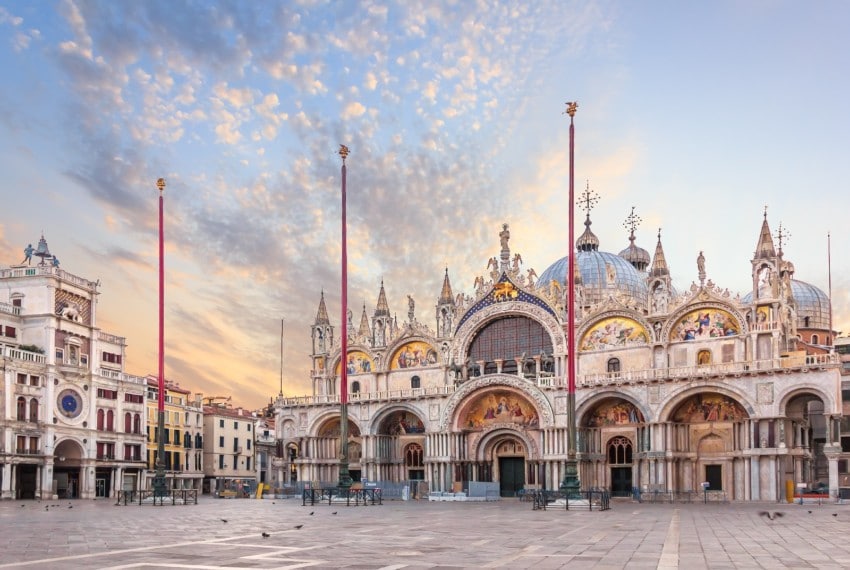The bronze horses look ready to sprint off the balcony and onto the Piazza. If
they did somehow come to life and jump off that would certainly create havoc in
the square, but there was a time in Venice when horses were just as common as
pigeons.
The Square itself would have looked very different in the early days of Venice.
Originally it was all earth and grass, which turned to muddy grass more often
than not. After all, the water front initially was not as far out as it is today, and
there was water flowing just outside the Doge’s Palace walls, reaching the corner
of the Basilica, where all types of boats were kept.
In the late 12th century, Doge
Sebastiano Ziani decided to inter this area with terracotta, thus giving birth to
the Piazzetta. He then also had the whole pavement of the Piazza rebuilt in
terracotta, as the earthy, muddy, squelchy grass certainly took away some of the
regal respectability. A hardened pavement did not limit the use of horses, real
horses that is, and noblemen would be seen riding around the Piazza, and the
whole of Venice in fact. But horses were used in the Piazza mainly for sporting
events, the so-called “jousting” so popular in the middle-ages. Young, brash
noblemen would come from all around Europe to enter into a tournament here
in Piazza san Marco, trying impress the local women undoubtedly.
The Piazza became the epicentre of all important cerimonies and festivities,
whether religious, political or for entertainment, and sometimes all three
together, like for the election of a new Doge. The newly-appointed Doge would
come out of the Basilica sitting on a podium supported by four burly men, he
would then be taken around the Piazza and throw coins at the crowds awaiting
him, before eventually making his way into the Doge’s Palace. First impressions
are of course everything for public figures, and the doges who wanted to win the
public’s favour, knew that only golden coins would do, nothing less.






